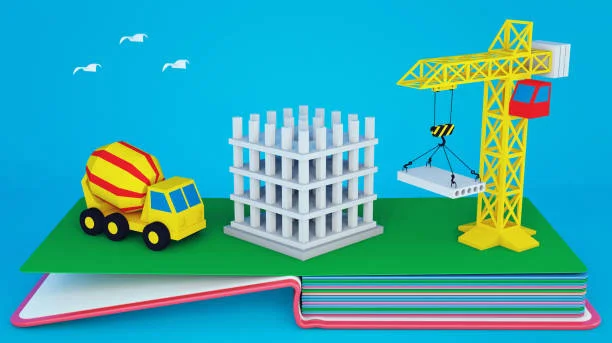The preconstruction phase often determines whether a project stays on schedule and within budget. While major milestones grab attention, it’s frequently the small, overlooked details that make the difference between a smooth launch and costly delays. Here are seven seemingly minor elements that can dramatically accelerate your preconstruction timeline.
Dive into curiosity, leave with wisdom and wonder.
1. Standardize Your Document Naming Conventions Early
The chaos of misnamed files can derail even the most organized teams. Establish clear naming protocols from day one that include project codes, revision numbers, and dates in a consistent format. For example: “ProjectName_DrawingType_YYYYMMDD_Rev##”. When everyone from architects to subcontractors follows the same system, finding the correct specifications or updated drawings becomes instant rather than a treasure hunt that costs hours.
2. Create Digital Asset Libraries for Repetitive Elements
Smart contractors build comprehensive libraries of commonly used components—from standard connection details to material specifications. With the growing focus on eco-friendly building materials, having pre-vetted sustainable alternatives readily available in your digital library can significantly speed up the specification process.
When your team can quickly pull proven solutions for HVAC connections, structural details, or finish schedules, you eliminate the time spent reinventing solutions for routine challenges. This approach also reduces errors since you’re using tested, approved details.
3. Implement Real-Time Collaboration Protocols
Establish specific times for quick daily check-ins via video conferencing, even for brief 15-minute sessions. When team members across different locations know they can get immediate answers during these windows, decisions happen faster. This approach becomes even more critical when coordinating complex building components. As demonstrated in the integration of precast concrete and BIM technologies, real-time collaboration platforms allow architects, engineers, and manufacturers to work from the same digital model simultaneously, ensuring perfect alignment before production begins.
Questions that might otherwise sit in email for hours get resolved instantly, preventing the downstream delays that compound throughout the preconstruction phase.
4. Pre-qualify and Categorize Your Vendor Network
Don’t wait until you need a specialty contractor to start your search. Maintain an active database of pre-qualified vendors organized by trade, capacity, geographic coverage, and specialty capabilities. Include their typical response times, minimum project sizes, and recent performance ratings. When project needs arise, you can immediately reach out to appropriate candidates rather than starting from scratch.
The key to an effective vendor database lies in comprehensive documentation that goes beyond basic contact information. For each contractor, maintain detailed profiles that include their insurance coverage limits, bonding capacity, safety records, and OSHA compliance history.
Create subcategories within each trade to reflect specializations—for instance, separate HVAC contractors who focus on healthcare facilities from those who primarily handle commercial office buildings. This granular approach ensures you’re matching the right expertise to each project’s unique requirements.
5. Leverage Technology for Streamlined Bidding Processes
Modern bidding platforms can transform the traditionally cumbersome bid solicitation process. Digital tools allow you to distribute plans to multiple contractors simultaneously, track bid submissions in real-time, and maintain clear communication threads for questions and clarifications. Platforms like Downtobid enable contractors to read project information instantly, extract project scopes and invite subcontractors efficiently, eliminating the delays associated with traditional paper-based processes.
These platforms also provide automated notification systems that alert stakeholders when new documents are uploaded, addenda are issued, or bid deadlines approach. Advanced analytics features help identify the most responsive contractors and track historical bid patterns, enabling more strategic vendor selection. Integration capabilities with project management software and estimating tools create seamless workflows that reduce data re-entry and minimize errors. Many platforms offer mobile access, allowing contractors to review plans and submit bids from job sites, further accelerating the process.
6. Establish Clear Decision-Making Hierarchies
Nothing slows preconstruction like unclear approval processes. Document exactly who has authority to approve various types of changes, from minor specification adjustments to design modifications. Include backup decision-makers for when primary contacts are unavailable. When everyone understands the chain of command, approvals move through the system without bottlenecks.
Create tiered approval matrices that specify dollar thresholds and decision complexity levels. For example, field superintendents might approve material substitutions under $5,000, while major design changes require architect and owner sign-off. Establish emergency decision protocols for time-sensitive situations, including after-hours contact procedures and temporary approval mechanisms that can keep projects moving.
Document these hierarchies in easily accessible formats—consider creating visual org charts with contact information, approval limits, and escalation paths. Distribute this information to all team members and subcontractors at project kickoff meetings. Regular updates ensure the hierarchy remains current as personnel changes occur throughout the preconstruction phase.
7. Create Contingency Plans for Common Obstacles
Experienced project managers know that certain challenges appear repeatedly—permit delays, material lead time extensions, or key personnel changes. Develop standard response procedures for these predictable scenarios. Having pre-approved alternate materials, backup suppliers, or expedited permit processes already in place means you can pivot quickly when obstacles arise rather than scrambling for solutions.
The Compound Effect of Small Improvements
While each of these details might seem minor individually, their cumulative impact can compress preconstruction timelines by weeks or even months. The key is implementing these systems before you need them, not in response to problems. Teams that invest time in these foundational elements during slower periods find themselves with significant competitive advantages when project demands intensify.
The most successful construction professionals understand that speed in preconstruction isn’t about rushing—it’s about eliminating friction. By paying attention to these seven details, you create a smoother path from concept to groundbreaking, ensuring your projects launch on time and positioned for success.
Bright ideas and fresh perspectives await—step into 2A Magazine.







